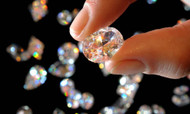Do Lab Grown Diamonds Have Inclusions?
Dec 1st 2023
When it comes to the authenticity of the diamonds. It is essential to know how many impurities are present in them internally and externally. The shine, brilliance, quality, and cut of the diamonds are vital things that can increase or decrease their authenticity. Inclusions are known as the impurities or flaws present in the diamonds. When clients buy lab-grown diamonds, they want to know do lab-grown diamonds have inclusions. It can help ensure that the equipment you’re buying is of high quality. And you can use it for an extended period.
A Well-Explained Guide To Know: Do Lab-Grown Diamonds Have Inclusions?
Below are the main things you need to know about inclusions in lab-grown diamonds.
What Are Inclusions?
When a diamond is formed naturally or in a lab, some tiny particles mix with the diamonds due to the crystallization procedure. These tiny particles are visible and non-visile but affect the diamonds' quality and clarity.
Man-Made And Natural Diamonds:
The second thing you need to know about the presence of inclusions or impurities in lab-grown diamonds. Lab-grown diamonds are produced and prepared in a lab under controlled conditions. Due to this, they have fewer impurities than naturally mined diamonds made without any controlled conditions and environments. That lead to more inclusions in them.
Transparency Checking:
Third, it is vital to know that lab-made and naturally mined diamonds undergo several tests. Still, one primary test is their transparency checking by the Gemological Institute of America (GIA). In this test, it is observed that the inclusions in the diamonds are visible or microscopic. Which helps in knowing the level of transparency of the diamonds.
Noticeable And Microscopic Impurities:
Fourth, as mentioned earlier, mined diamonds are produced under open environments without controlled conditions. So they attract more inclusions and are noticeable easily. However, the lab-grown diamonds have fewer inclusions and are microscopic, not easily visible, providing better quality and transparency.
Use Of Advanced Technology And Methods:
Fifth, as new advancements and technological equipment are introduced, the production procedure of lab-grown diamonds is straightforward. Due to improved technology. The production process now helps ensure that controlled conditions can lead to lesser inclusions in the diamonds. Looking for engagement rings? Try halo Diamond engagement rings.
Influence On The Cost:
Sixth, you should know that inclusions highly influence the cost of the diamonds. If the inclusions are noticeable, the cost of the lab-grown diamonds can decrease. Whereas, if the inclusions are microscopic or with higher transparency, the cost of the diamonds will increase instantly. However, the price of lab-grown diamonds will still be affordable compared to naturally mined diamonds.
Demands Of The Customers:
Seventh, the clients demand that they require lab-grown diamonds that are flawless and highly transparent. This can ensure that the clients can find their required diamonds at a budget-friendly price. And feel satisfied with their quality. Don’t forget to check out the multi stone engagement diamond ring for your engagement ceremony.
Receipt Of Grading:
Eighth, the most important thing is to check out the grading receipt of the diamonds. From a highly trusted gemological institute. You can get that receipt while buying the lab made diamonds and request them to show you the receipt. This will also help you get detailed information on the diamonds and their clarity grading.
Final Words:
To conclude, do lab-grown diamonds have inclusions? Inclusions are presented in mined and lab-grown diamonds, but their quantity and visibility matter. It can affect the quality, price, transparency, durability, etc of the diamonds. You must take proper measures to ensure you get the best and highest-quality diamonds that look flawless.

